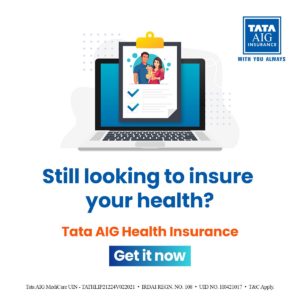The tax filing season is around the corner as the last tax filing date is 31st July 2019. That is why most of you must be busy preparing your returns and looking for help in filing the returns correctly. Income tax, being a technical concept, often leads you to make mistakes in your returns which might prove costly. So, if you are confused about any aspect of tax filing, here is a step by step guide to help you file your taxes perfectly –
Step 1- Do your homework
The first step to do before filing your taxes is to prepare the groundwork. When you have done your homework you would not miss out on any important detail in the tax file. To do your homework, here are the things you should check and arrange –
Know the tax brackets to know in which bracket your income would fall. The tax brackets are as follows –
- For HUFs and individuals aged up to 60 years –
| Income level | Tax rate |
| Up to INR 250,000 | Nil |
| INR 250,001 to INR 500,000 | 5% of the income exceeding INR 250,000 |
| INR 500,001 to INR 10,00,000 | INR 12,500 + 20% of the income exceeding INR 500,000 |
| INR 10,00,001 and above | INR 112,500 + 30% of the income exceeding INR 10,00,000 |
- For Individuals aged between 61 years and 80 years
| Income level | Tax rate |
| Up to INR 300,000 | Nil |
| INR 300,001 to INR 500,000 | 5% of the income exceeding INR 300,000 |
| INR 500,001 to INR 10,00,000 | INR 10,000 + 20% of the income exceeding INR 500,000 |
| INR 10,00,001 and above | INR 110,000 + 30% of the income exceeding INR 10,00,000 |
- For individuals aged 81 years and above
| Income level | Tax rate |
| Up to INR 500,000 | Nil |
| INR 500,001 to INR 10,00,000 | 20% of the income exceeding INR 500,000 |
| INR 10,00,001 and above | INR 100,000 + 30% of the income exceeding INR 10,00,000 |
Also, check the incomes on which you can claim exemptions like interest income from savings account (up to INR 10,000 under Section 80TTA), interest earned from PPF (Section 80C), etc.
- Collect all the relevant tax related documents which include the following –
- TDS certificates which would show the details of TDS already deducted from your income
- Interest statements of your bank savings account and fixed deposit accounts
- Form 16 issued by your employer if you are a salaried employee. The form would give a lowdown on the TDS deducted on your salary income by your employer
- The repayment schedule of your home loan, if availed. This schedule would help you find out the principal and interest components of your EMIs so that you can claim the tax benefits available on home loans. The principal repaid can be claimed as a deductible expense under Section 80C up to INR 1.5 lakhs while the interest paid can be claimed as a deduction under Section 24 and/or Section 80EE.
- If you have sold a capital asset during the financial year, the details of capital gains or loss need also be calculated. There are two types of capital gains – Long Term Capital Gains (LTCG) and Short Term Capital Gains (STCG). The tax treatment of both these gains is different and so you should understand whether your capital gain is LTCG or STCG. LTCG would allow you the benefit of indexation in case of real estate and also in case of debt mutual funds.
- Download form 26AS and check whether the details of TDS deductions match the actual TDS deducted from your income. The form can be downloaded from TRACES website. Once you get the form, you should cross-check it with the TDS certificates that you have received from your employer, bank, etc. If there are any errors, get them rectified
- If you are salaried, deduct the exempted incomes from your salary. These exempted incomes include House Rent Allowance (HRA), Leave Travel Allowance (LTA), meal coupons, reimbursement of phone bills, etc. After deducting the eligible deductions, arrive at the net taxable salary
Step 2 – Calculate your tax liability
After you have the details of your income at your disposal, aggregate the incomes under the five heads of income of tax –
- Income from salary
- Income from house property
- Income from business or profession
- Income from capital gains
- Income from other sources
List the different incomes under the applicable heads. Add up the gross taxable income. Once the income is added up, claim deductions under Section 80, if applicable. For instance, Section 80C deductions list various investments and expenses which can be reduced from the taxable income. Similarly, Section 80D allows a deduction for the health insurance premiums paid. Check for the eligible deductions and claim them to lower your tax liability. After claiming the deductions and exemptions you get the net taxable income. Calculate your tax liability on that income using the applicable tax brackets mentioned above. You would get your tax liability.
Step 3 – File your income tax return
After you have calculated your tax liability, it is time to file your tax returns. Income tax returns are supposed to be filed if you are earning an income irrespective of the fact that your income might not be taxable in your hands. Moreover, by filing your returns, you can claim a tax refund if TDS has been deducted on an exempted income or if an excess TDS has been paid.
Nowadays, returns are being filed online which is quick and simple. You can, therefore, file your returns online on the income tax department’s website. Before filing your returns, however, select the correct ITR which would be required for filing your returns. If you are filing your returns under ITR 1 or ITR 4, you can do so online. For other ITRs, however, you would have to download the software of Excel or Java to prepare and file your returns.
Step 4 – E-Verify your income tax return
After you have filed your income tax return, you would have to verify it too. Online verification is the norm for verifying the return. After filing the return, a confirmation email would be sent from the tax department to verify your return. You can verify your return using the link mentioned in the email.
Step 5 – Claim your refunds
After you have filed and verified your ITR, the income tax department would process your returns. If you are eligible for any tax refunds, the same would be credited to your bank account in some time. You should check the status of such refunds and if the money is not refunded, you should follow up with the income tax department regarding the same.
Tax filing is not a difficult process but many individuals miss one or the other step or are not fully prepared to file their returns properly. The above-mentioned steps lay down the basic method of filing your returns using which you can file your taxes easily. So, use these points to prepare your returns. The deadline is approaching. Don’t be late or else you would have to pay a late filing penalty. You wouldn’t want that, would you?








